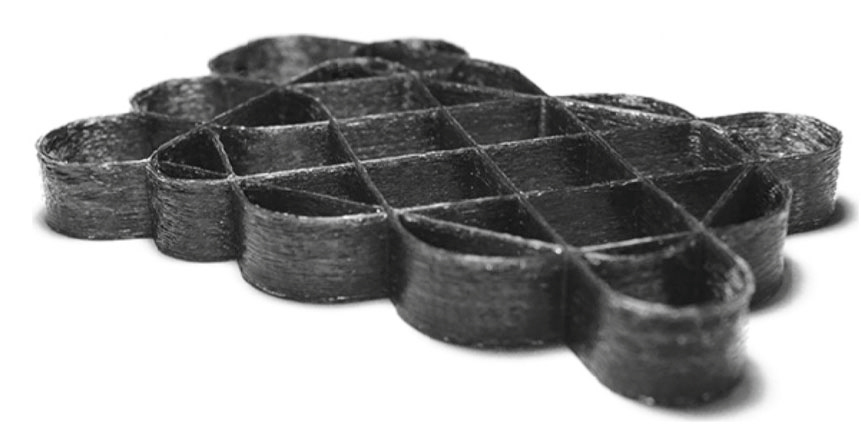A team of researchers in Russia have published a paper that uses 3D printing to unlock the potential of carbon fiber composite materials. The materials are commonly used in industry to make lightweight and durable parts.
In the Russian space program Roscosmos, carbon-plastic is used to make the fairing of the Soyuz family of rockets. Carbon fiber is also used in components for Formula 1 cars.

A combination of strength and durability
Carbon fiber composites can be made as thermoset, thermoplastic, and two-matrix composites.
Thermoset carbon fibers are commonly used in aerospace, though they are only suitable for objects with a short lifespan. Carbon reinforced thermoplastics by comparison have an unlimited lifetime, but they are difficult to produce. This research looks to combine both of these materials in a two-matrix composite.
In the thermoplastic/thermoset two-matrix composite, the main disadvantage is a low volume of carbon fibers – sacrificing resistance to deformation and strength. Instead of increasing the carbon fiber content of the two-matrix, 3D printing creates more complex structures out of the material to add mechanical strength.
3D printing the impossible
To 3D print the two-matrix composite, researchers reconfigured a 3D printer with a microextruder loaded with thermoset and thermoplastic fibers. The fibers were covered with molten thermoplastic and extruded layer by layer into a structurally reinforced shape.

The lattice element created through 3D printing the two-matrix carbon fiber is a not feasible using traditional methods of manufacturing. 3D printing doesn’t increase the carbon fiber content of the material, but the lattice shape does promise added strength through the complex structure.
Development of a Two-Matrix Composite Material Fabricated by 3D Printing, is published in academic journal Polymer Science.
The reasearch was co-authored by A. V. Azarova, M. V. Golubev, D. S. Krasovskii, V. V. Stupnikov and A. R. Khaziev of the Skolkovo Institute of Science and Technology (Skoltech); F. K. Antonov from OOO Anizoprint, Moscow, who performed microstructur studies of the material; and V. V. Vasil’ev, V. A. Salov and A. F. Razin from the OAO Central Research Institute for Special Machinery in Khot’kovo.
The fiber of smart materials
Skoltech are also in a materials research agreement with Swiss technology company Oerlikon (SWX:OERL), alongside the Technical University of Munich.
Successful 3D printing with carbon fiber composite materials has also been performed by the Lawrence Livermore National Laboratory (LLNL) in California, and fiber distribution within a polymer is one of the key areas of investigation for 3D printing smart materials.
To stay up to date with the latest 3D printable material developments, sign up to the 3D Printing Industry newsletter and follow us on our active social media channels.
Featured image: Carbon-plastic fairing is used on the Soyuz-U rocket from the Russian space program Roscosmos (РОСКОСМОСV) Photo via Roscosmos on Facebook


